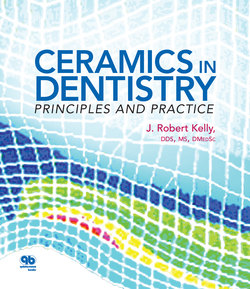Читать книгу Ceramics in Dentistry - J. Robert Kelly - Страница 6
На сайте Литреса книга снята с продажи.
ОглавлениеPreface
Welcome to the “Kelly Lectures on Ceramics”—aimed at general dentists, prosthodontists, high-end laboratory technicians, and prostho-cadets—meant to harken back to the Feynman Lectures on Physics. (Alas, I do not play bongo drums like he did.) This book is designed to teach what this stuff is, what it is good for (from clinical data), and how to maximize durability and esthetics.
Before I headed off to Harvard to study prosthodontics and MIT as a cross-registration student studying glass science and ceramic engineering, I knew that I faced a pivotal career choice: to focus my doctoral work on either resin-based composites or ceramics. I had been introduced to both along with metallurgy and mechanics in my superb materials masters degree program mentored by Bill Brantley at Marquette University. Obviously ceramics won, in part due to inspiration from the two-volume series on the art and science of dental ceramics by Dr John McLean (Quintessence, 1979). At that time my interest in all-ceramic systems and high-end esthetics was warming up.
In Boston, Ted Riley and Ralph Sozio, working with Coors Biomedical, had introduced the first net-shape (ie, nonshrinking) ceramic to dentistry along with the first “high technology” ceramics processing equipment into the dental laboratory. Shortly thereafter, David Grossman from Corning Glass Works, working in partnership with Dentsply, introduced Dicor, the first glass-ceramic dental material. Also in Boston, Kenneth Malament was just beginning his phenomenal in-depth clinical study of many aspects of all-ceramic prostheses. About this time, my MIT professor, Kent Bowen, received a letter from Dr Werner Mörmann, the inventor of the CEREC machine, wanting a better ceramic. It was my job to write the answer and to host Werner at the MIT Ceramics Processing Research Laboratory. Next to visit was Henry Rauter, owner of Vita Zahnfabrik, along with Wayne Whitehill, President of Vident. With the sponsorship of Vita and working closely with their top inorganic chemist, Norbert Thiel, we invented the Vita Mark II block for CEREC—still a high-technology material on today’s market with wonderful wear kindness (trade secret). In the meantime, I attended the first CEREC course taught in English (at the University of Zurich) and learned to appreciate flying to Europe in business class!
Over the years I have developed quite some teaching material on dental ceramics, including organizational approaches; simplified concepts of strength, toughness, and durability; and even a new classification system used in the international dental standard, ISO 6872. Many, many lecture opportunities presented themselves, and slowly I came to have sufficient material to fill all-day programs—and now a book.
My wife has been encouraging me to write a book for years. I found that as I sat down to put keyboard to paper, I was simply lecturing through my fingertips with the wonderful opportunity to expand the content. Even more exciting was the idea to use either scannable codes or links to allow interested readers to sample extra visual content that is both humorous and informative. And best yet, the folks at Quintessence liked the idea (although Lisa Bywaters once suggested my appearing as a cartoon character). Thus, this book has the potential to be a “living book” as we can add to and enhance the linked content.
Acknowledgments
Key individuals helped in providing encouragement and proofreading of the manuscript, including Drs Werner Mörmann of Zurich, Switzerland, and David Burnham of Edmonton, Canada. And, of course, thanks Patrice for the gentle wifely push <grin>!
